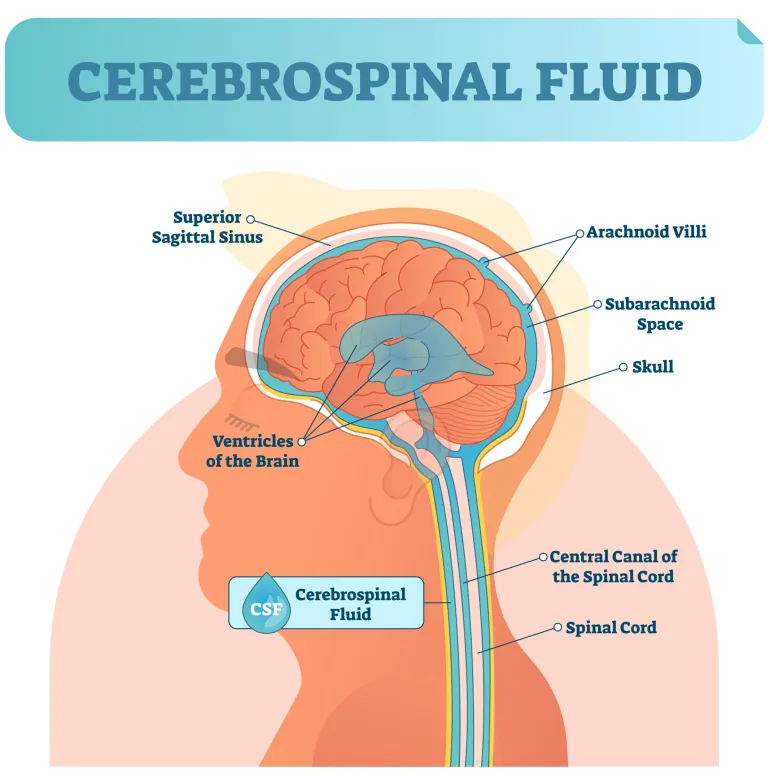Public transit may not be the first thing that comes to mind when we think about the brain, but it’s a great way to understand how all the parts of the central nervous system work together. Nutrients, hormones, and other important molecules (the passengers) need to get on and off at different stations to do their work. They might first stop at the large internal chambers within the brain, called ventricles. From the ventricles, they can get to the central canal in the spinal cord, as well as the subarachnoid space. The subarachnoid space is a space between two membranes that surround the brain and spinal cord. It provides a stable structure for a network of veins and arteries.
The passengers are shuttled from station to station by the cerebrospinal fluid (CSF), a clear, colourless fluid that provides the central nervous system with necessary nutrients and hormones while carrying away waste products. CSF also cushions the brain and spinal cord by circulating between layers of tissues surrounding them. The whole public transit system is enclosed: the subarachnoid space and the ventricles are connected to the central canal in the spinal cord, forming a single reservoir for CSF.

CSF is made by the choroid plexus, a collection of tiny blood vessels called capillaries. Capillaries filter the blood and secrete it into the ventricles. When the pressure of CSF is less than the pressure in the capillaries, CSF flows out and into the ventricles. When the pressure of CSF is greater than that of the bloodstream, the extra fluid is absorbed from the subarachnoid space and into sinuses (large areas filled with blood), where it can flow into the surrounding veins. The blood supply in the central nervous system tightly regulates the movement of molecules or cells between the blood and brain. This blood-brain barrier is crucial for protecting the brain from toxins and pathogens. Dysfunction of this specific system contributes to the development of neurological diseases.

Why is CSF Important for Neurodegenerative Diseases?
In neurodegenerative diseases like Spinocerebellar Ataxias, CSF contains molecules that can be used as biomarkers. Biomarkers are disease-specific proteins that change in concentration depending on disease stages. Biomarkers provide information on disease progression, with or without the impact of therapeutics. They are also crucial for understanding how disease processes work and assist in developing treatments.
The development of intrathecal injections, injecting into the central canal for distribution to the central nervous system (for example, spinal anesthesia), has been monumental for administering drugs in neurodegenerative diseases. In other words, not only can the public transit system of the central nervous system be investigated to see what passengers are associated with the disease, but it can be used to deliver replica “medicine passengers” to the place where the disease occurs.
If you would like to learn more about Cerebrospinal Fluid, take a look at these resources by MedlinePlus and WebMD.
Snapshot written by Kaitlyn Neuman and edited by Dr. Tamara Maiuri.










